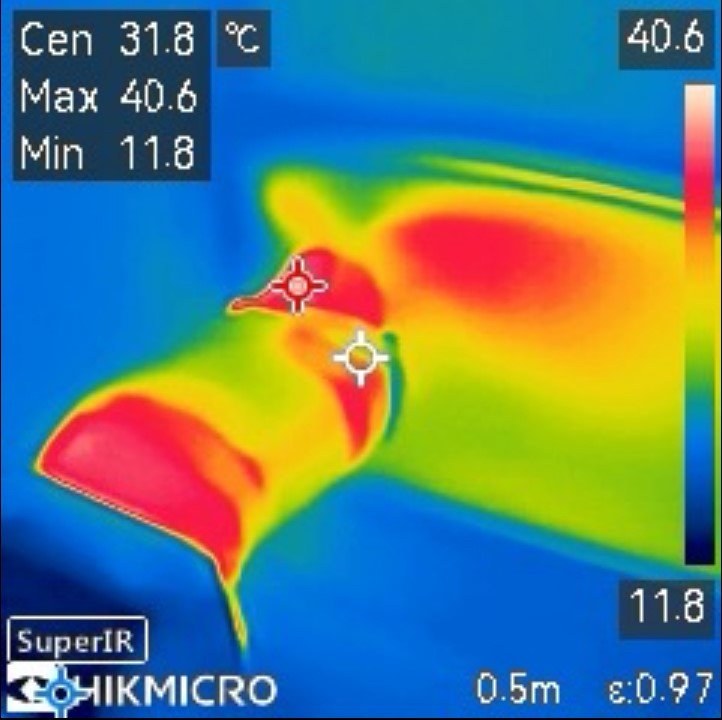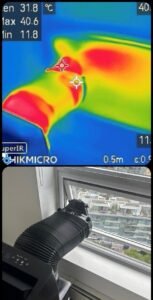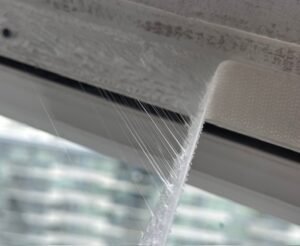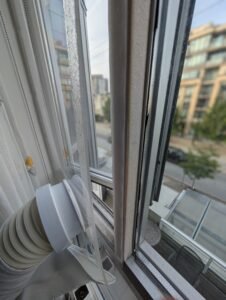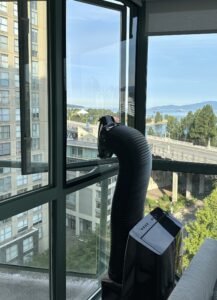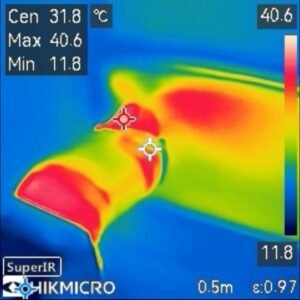If you’re thinking of using a dual-hose portable AC in a casement window, it’s important to understand the limitations before installing.
Dual-hose portable air conditioners are a popular choice for cooling rooms quickly and efficiently. Compared to single-hose units, they offer faster temperature drops, balanced airflow, and reduced negative pressure inside your space. If you’ve purchased one, you’ve likely done your research—and made a solid choice for performance.
However, while dual-hose ACs shine in many scenarios, they’re not a good match for every type of window. In particular, they often fail to perform properly with casement or awning-style windows, especially those that open less than 10 inches. Limited window clearance can lead to airflow issues, heat buildup, and even damage to both the AC unit and your AC panel.
In this post, we’ll break down:
- How dual-hose portable ACs are designed to work
- Why they cause problems in narrow-opening windows
- What the consequences are
- And our best recommendation for casement and awning window users
How Dual-Hose Portable ACs Work — and Why Window Clearance Matters
Dual-hose portable ACs are designed with performance in mind. They use a two-part airflow system to cool more effectively than single-hose units. These two air paths are usually housed together inside a large oval-shaped hose that connects to your window panel.
Inside the oval hose:
- One internal round hose expels hot air generated by the cooling process and the AC compressor. Under normal conditions, this exhaust reaches about 120°F (49°C).
- The second hose draws in fresh outdoor air to help cool the internal components of the AC before it’s expelled again.
This system works well in sliding or sash windows, where there’s plenty of open space for air to flow freely in and out.
But in casement or awning windows, especially those with less than 10 inches of clearance, this design becomes problematic.
The Problem with Narrow Window Openings
When there’s not enough room for the exhaust air to exit cleanly, the hot air blows directly into the window sash or frame and bounces back toward the AC panel. This leads to:
- Back pressure, restricting the AC’s ability to vent hot air
- The compressor working harder, generating even more heat
- Exhaust temperatures rising to 130–150°F (54–66°C)
- Overheating of the AC panel and melting of the Velcro adhesive, causing it to detach from the window or panel
The consequences include:
- Reduced cooling performance
- Increased energy consumption
- Long-term damage to the AC
- Permanent damage to the AC panel installation
Our Recommendation: Use a Single-Hose AC for Casement and Awning Windows
If your home has casement or awning windows with limited opening space, we strongly recommend choosing a single-hose portable air conditioner.
While single-hose models may appear to offer slightly less power on paper, in a restricted window setup, a dual-hose AC won’t be able to perform to its full potential anyway—and could even be damaged due to heat and airflow issues.
A good single-hose unit will:
- Fit easily in narrow window openings
- Avoid blowback and overheating
- Maintain steady, reliable cooling
- Extend the life of both the AC and your window panel
One excellent option we recommend is the LG 10,000 BTU Dual Inverter Smart Wi-Fi Portable AC. It’s quiet, energy-efficient, and works exceptionally well in spaces with crank-out windows or limited clearance.
More Issues to Consider with Dual-Hose ACs
If you’re still considering a dual-hose portable AC, be sure to read our related blog:
8 Problems with Dual-Hose Portable AC Units
We cover additional challenges such as:
- Maintenance complexity
- Hose setup limitations
- Energy efficiency myths
- Space constraints
ACR’s Installation Policy on Dual-Hose ACs
When evaluating the feasibility of installing an AC panel, our team at Aircon Rescue Inc. prioritizes setups that ensure optimal performance for both your air conditioner and the panel itself.
If we see a dual-hose AC being used with a casement or awning window, we proceed with caution and fully inform our customers of the risks involved. If you choose to go ahead despite these concerns, please note:
ACR cannot guarantee performance or accept responsibility for damage to your AC unit or panel—including melted adhesive caused by heat buildup and improper airflow.
Final Thoughts
Dual-hose portable ACs are excellent units—but only when used in the right type of window. For homes with casement or awning windows, sticking with a high-quality single-hose AC is your best bet for performance, safety, and longevity.
Not sure which unit is right for your space?
📞 Contact us — we’re happy to help you find the best setup for your window type.

